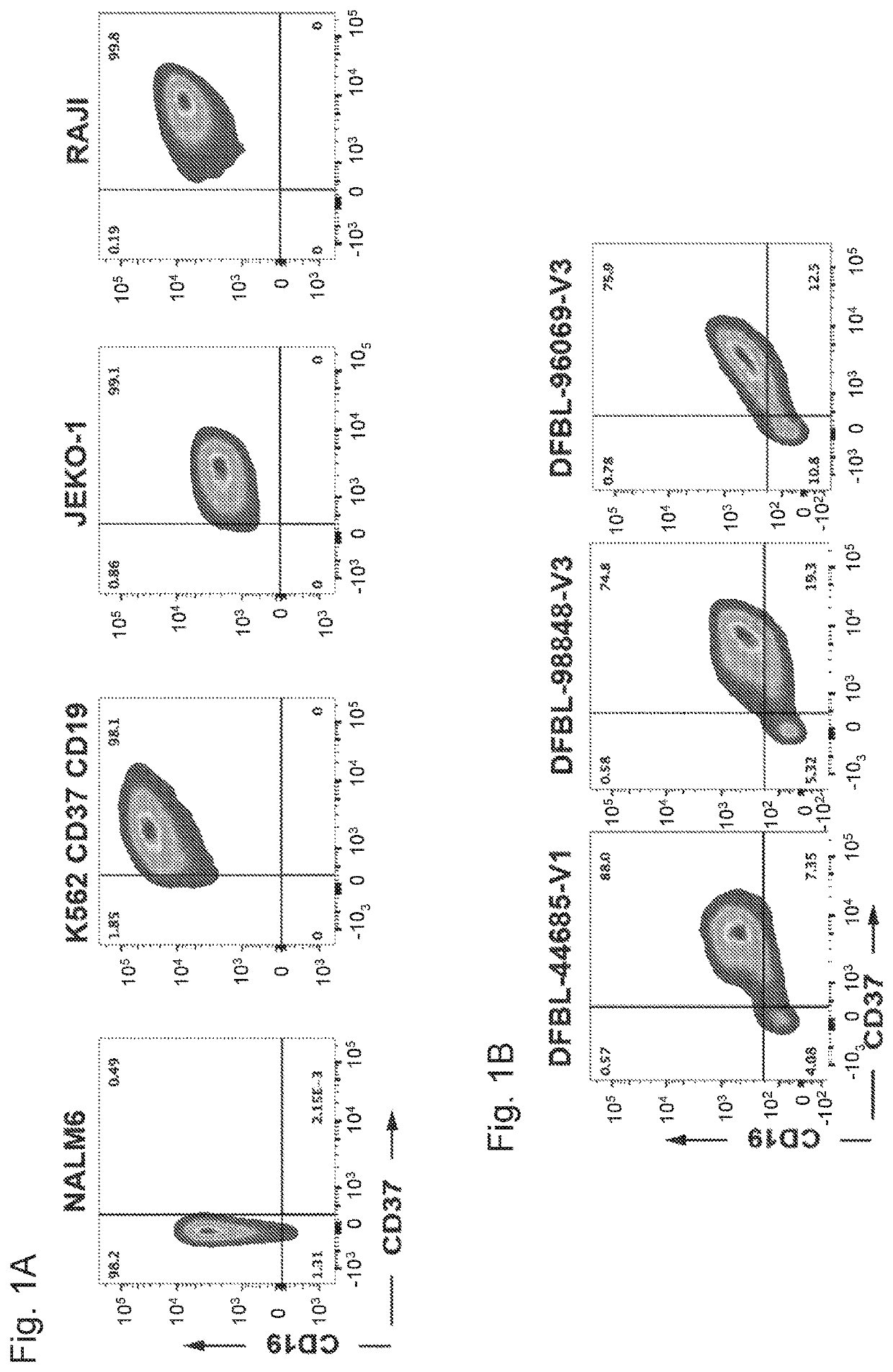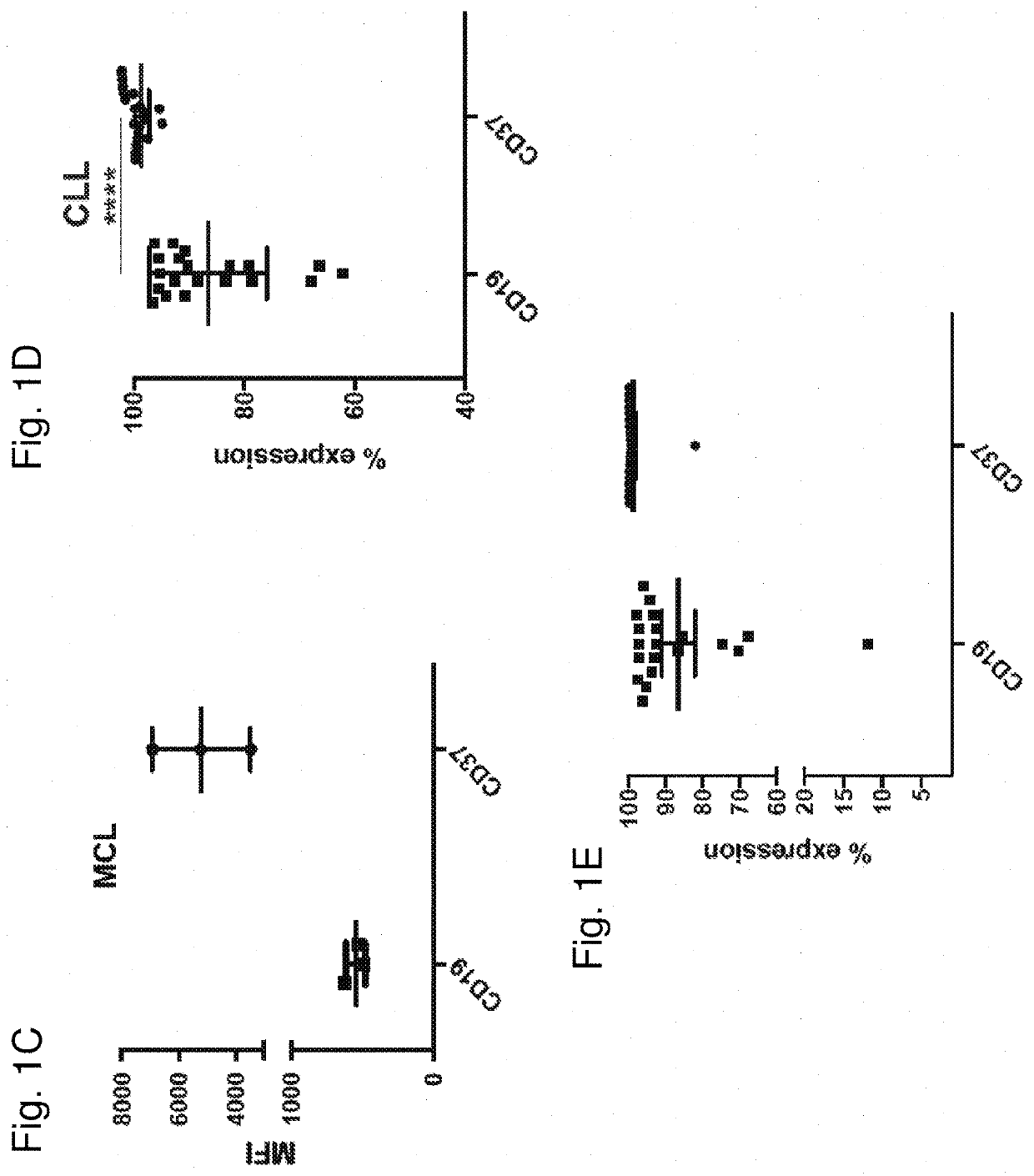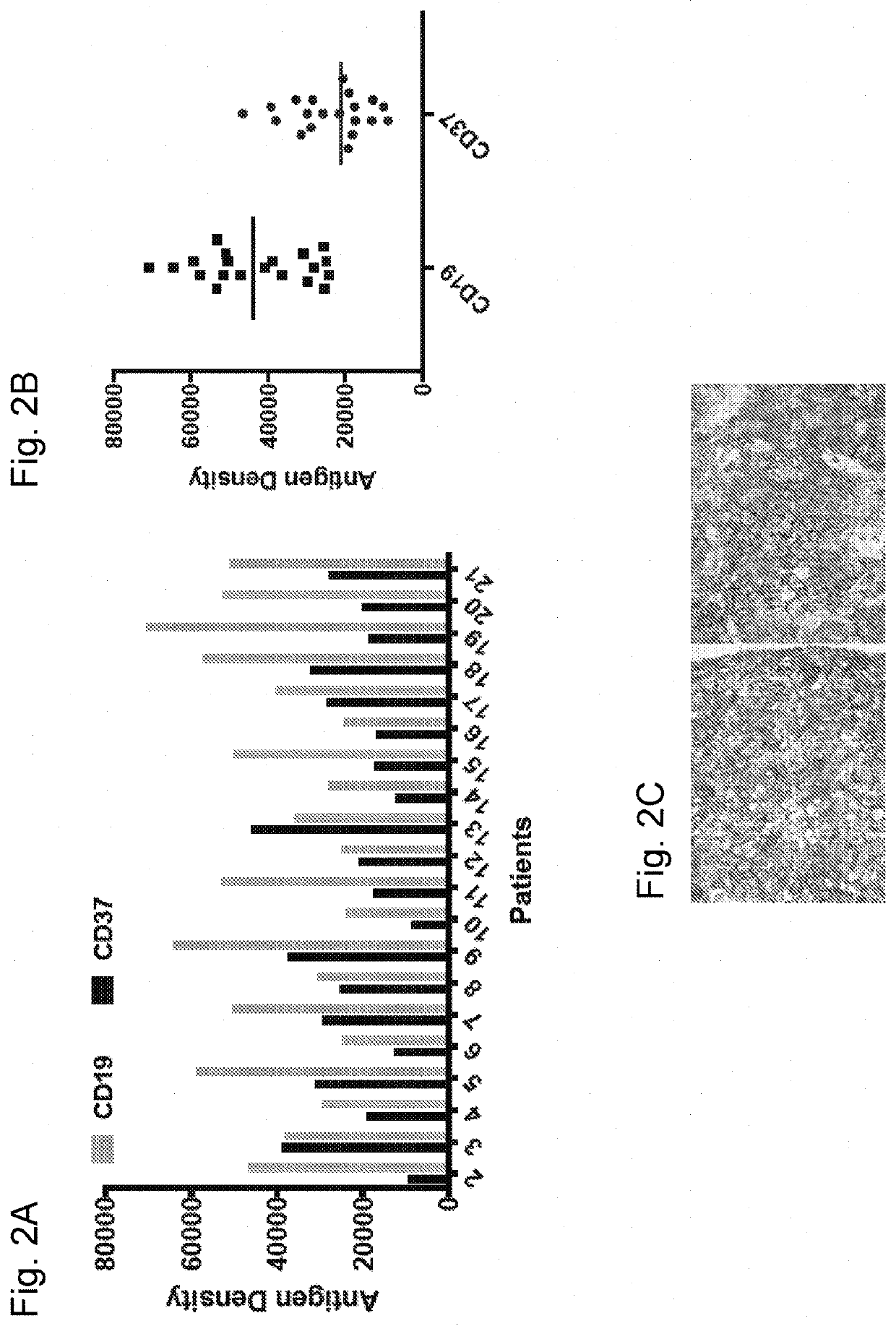Chimeric antigen receptors targeting cd37 and cd19
- Summary
- Abstract
- Description
- Claims
- Application Information
AI Technical Summary
Benefits of technology
Problems solved by technology
Method used
Image
Examples
example 1
uman T Cell Culture
[0206]For primary T lymphocyte expansions, bulk human T cells were activated (day 0) using anti-CD3 / CD28 Dynabeads (LifeTechnologies), followed by transduction with a lentiviral vector encoding the CAR 24-hours later. T cells were cultured in media supplemented with 20 IU / ml rhIL-2 beginning on day 0 of culture and were maintained at a constant cell concentration of 0.5×106 / mL by counting every 2-3 days. For functional assays, CAR T cells were cryopreserved at day 8-10 of culture, and upon thawing, were immediately stimulated with antigen or injected into mice.
example 2
s and Culture Conditions
[0207]The JEKO-1, RAJI and wild-type parental K562 cells were purchased from American Type Culture Collection (ATCC). K562 cells were engineered to express CD37 and CD19 (K562-CD37-CD19). For some assays, cell lines were engineered to constitutively express click beetle green (CBG) luciferase / enhanced GFP (eGFP) and then sorted on a FACSAria (BD Biosciences®) to obtain a 99% pure population (CBG-GFP+). The cell lines were cultured in RPMI media containing 10% fetal bovine serum (FBS), penicillin, and streptomycin.
example 3
metry
[0208]The following antibodies were used: CD37-APC (clone MB-1, eBioscience®), CD37-BV711 (clone MB-371, BD Biosciences®), CD19-Pacific Blue (clone HIB19, Biolegend®), CD19-FITC (clone 4G7, BD), CD5-BUV737 (clone UCHT2, BD), CD20-APC Cy7 (clone 2H7, Biolegend®), CD79b-PE (clone CB3-1, eBioscience®), CD3-BV786 (clone SK7, BD), CD3-BV605 (clone OKT3, Biolegend®), CD45-PeCy7 (clone H130, Biolegend®), CD16-PE (clone B73.1, Biolegend®), CD14-Pacific Blue (clone HCD14, Biologend®), CD56-APC (clone HCD56, Biolegend®), CD33-BV510 (clone P67.6, Biolegend®), CD107a-AF700 (clone H4A3, BD Biosciences®), CD69-APC (clone FN50, Biolegend®), and IFNγ-FITC (clone GZ-4, eBioscience®). Cells were stained for 30 min in the dark at 4° C. and washed twice in PBS with 2% FBS. DAPI was added to gate on viable cells before acquisition. Antigen density was measured using antibodies bound per cell (ABC) and was calculated using Quantum™ Simply Cellular (Bangs Laboratories).
PUM
| Property | Measurement | Unit |
|---|---|---|
| Fraction | aaaaa | aaaaa |
| Fraction | aaaaa | aaaaa |
| Fraction | aaaaa | aaaaa |
Abstract
Description
Claims
Application Information
 Login to View More
Login to View More - R&D
- Intellectual Property
- Life Sciences
- Materials
- Tech Scout
- Unparalleled Data Quality
- Higher Quality Content
- 60% Fewer Hallucinations
Browse by: Latest US Patents, China's latest patents, Technical Efficacy Thesaurus, Application Domain, Technology Topic, Popular Technical Reports.
© 2025 PatSnap. All rights reserved.Legal|Privacy policy|Modern Slavery Act Transparency Statement|Sitemap|About US| Contact US: help@patsnap.com



